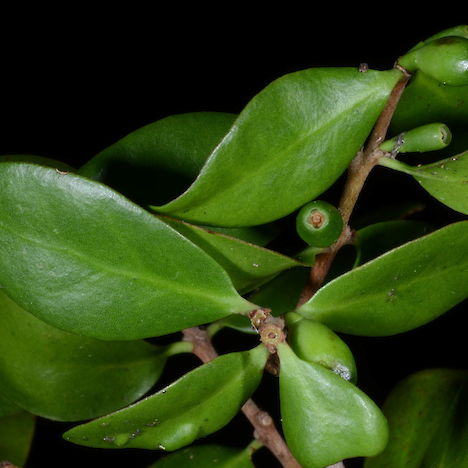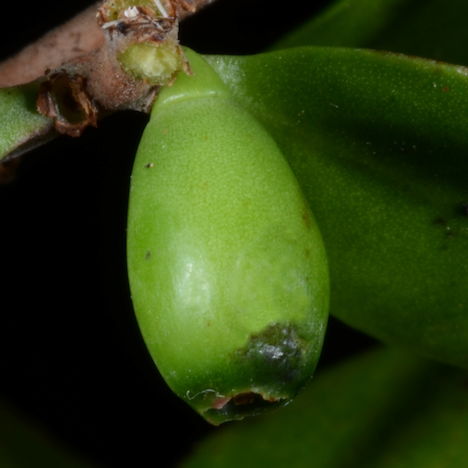Other names:
pirirangiThreat category:
At Risk: Declining?Regions:
Northland, Auckland, Waikato, Bay of Plenty, Gisborne, Hawkes Bay, Manawatu-Wanganui, Taranaki, Wellington, Nelson-Tasman, Marlborough, Westcoast, Canterbury, Otago, SouthlandDistribution:
North Island and South Island
Key Features
- Similar to scarlet mistletoe, but plants do not attain such a large size (to 2 m across), the opposite leaves are smaller (1-5 cm long), flowers are produced singly and the dull green fruits are urn-shaped.
- The leaves often have small blisters, which do not occur on scarlet mistletoe.
- Red mistletoe mainly occurs on black (Fuscospora solandri) or mountain beech (Fuscospora cliffortioides) or Quintinia serrata, pohutukawa and puriri in the far north.
Distribution and Habitat
- Throughout New Zealand.
- Lowland to montane forest, chiefly beech forest in the South Island.
Threats
- Possum browse.
- Decline of birds (chiefly bellbird and tui) associated with pollination and dispersal.
- Habitat modification and loss.
- Fungal disease.
Management Opportunities
- Survey for new locations.
- Mark known sites.
- Protection of habitat.
- Enhance habitat for bellbirds and tui (e.g. by planting nectar-producing species such as flax and kowhai).
- Possum control by poisoning or trapping, caging plants or banding host trees.
- Ensure that forest owners are aware of potential habitats and can recognise the species.
Monitoring Options
- Check existing populations annually.
- Report new locations to DOC, NZPCN.
Further Information and Support
- New Zealand Plant Conservation Network (NZPCN). http://www.nzpcn.org.nz
- References
- Dopson et al. (1999). The conservation requirements of New Zealand’s nationally threatened vascular plants. Threatened Species Occasional Publication 13. Department of Conservation, Wellington.
- Poole & Adams (1994). Trees and shrubs of New Zealand. Maanaki Whenua Press, Lincoln.




